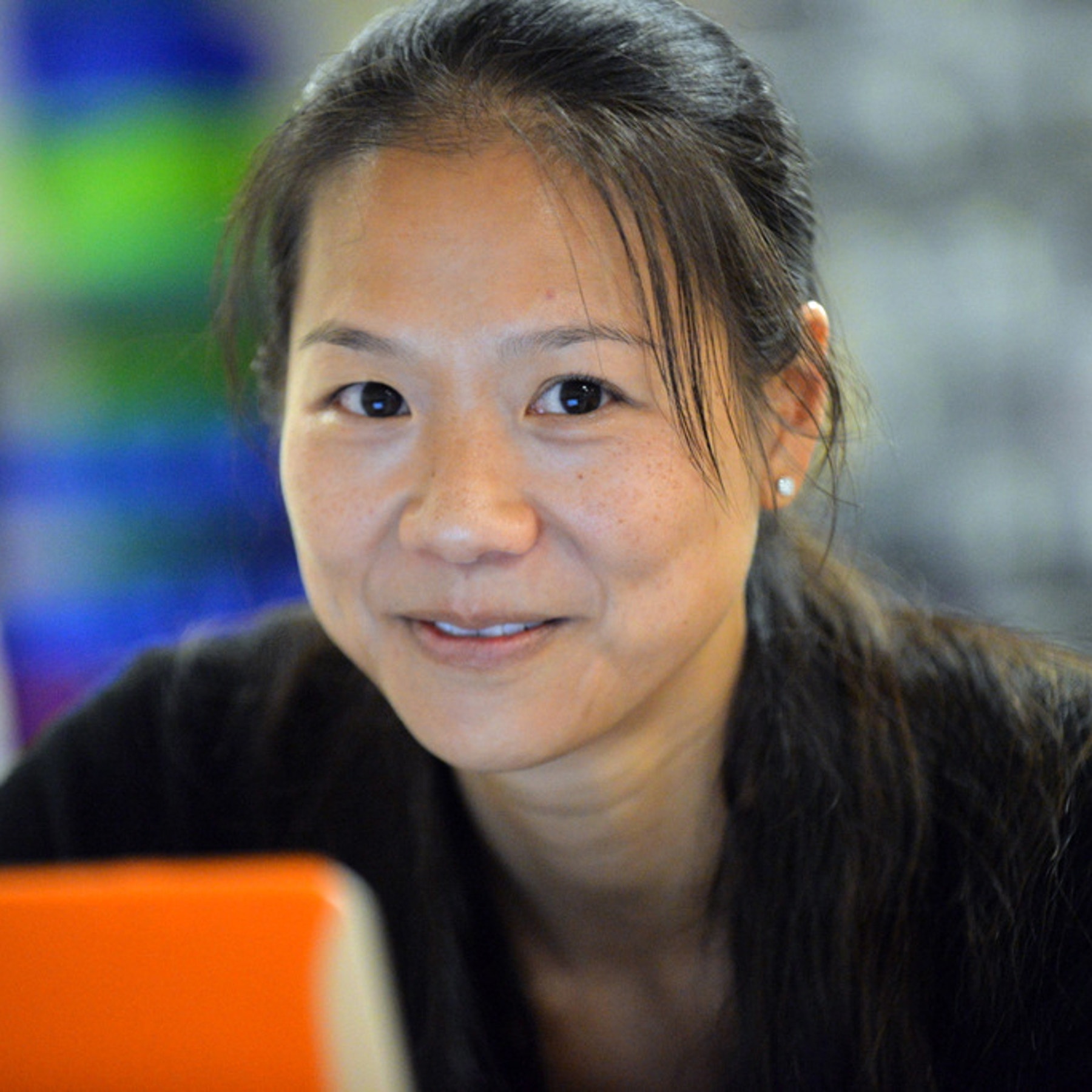A Continuum of Learning with LEGO® Education
Huijing Wu
Robotics Teacher
The Eliot School
Grades K-8
Boston, Massachusetts

“When you think you’re done,” says Huijing Wu. “You’ve just begun,” respond Huijing’s students as they dive further into their open-ended projects with LEGO® Education solutions.
Huijing teaches a K-8 robotics course at The Eliot School in Massachusetts. She plans the coursework for each grade level to enable students to build on concepts from the previous year using project-based learning, particularly with open-ended exploration. The goal at The Eliot School is to provide access to robotics to all students. They do this with LEGO® Education solutions.
“I see it as a continuum,” says Huijing. In 1st grade, students learn simple structures, and in 2nd grade they transition into LEGO® Education Simple Machines, where they learn the operations of gears, levers and pulleys. By 3rd grade students are working with WeDo 2.0 on building and basic programming with drag-and-drop blocks. “We’re adding on. So the combination of structure plus programming really comes together in 3rd grade,” says Huijing. The students transition to LEGO® MINDSTORMS® Education EV3 in 5th grade. There is a continuous connection to the concepts they learn each year in science and engineering. “We’re really pushing the design engineering process and understanding that it is a process.” With the curricula, Huijing uses product releases from the real-world as examples to demonstrate that process, citing product releases are stopping point along the way to another build.
We’re really pushing the design engineering process and understanding that it is a process
Huijing Wu
Robotics Teacher, The Eliot School, Grades K-8, Boston, Massachusetts
Connecting her students work to their everyday lives is important to Huijing. Everything they’re learning in the classroom has a direct link to the outside world to make their learning meaningful and impactful. “There has to be purpose behind what they’re learning,” says Huijing. Her approach allows students to look at a problem, brainstorm a solution and then work backward to identify the skills needed to reach the solution. When talking about the projects in the classroom, Huijing says, “There’s structure, but it looks different.” Huijing continues, “If anyone were to walk in it looks really chaotic, but if you were to step in to the teams’ bubbles you can hear the conversation and the discourse is on topic. They’re on task.”
The engagement with LEGO® Education solutions allows every student to contribute. One student in her 2nd grade class is nonverbal. When LEGO® Education solutions are introduced to the class, she is completely engaged. She works with her team to problem solve and develop solutions as a team. The fact that LEGO® Education solutions are hands-on is something that is so accessible to all students.
Huijing’s advice for other educators is to become a facilitator in the classroom and learn alongside your students. “That’s when the most creativity occurs is when you let go,” says Huijing. I’ve been doing this for awhile and students still surprise me with questions.” Huijing enjoys continually learning with her students as they discover solutions to projects, reflect and share findings and continue with the process, discovering learning at each stop along the way.